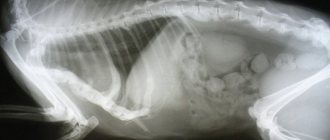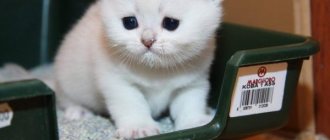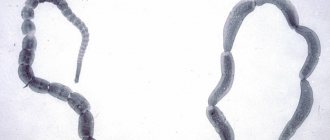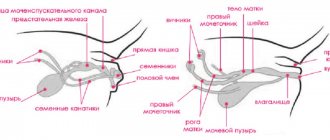Some diseases and conditions require an IV for cats. Typically, intravenous infusions are given for acute forms of intoxication, kidney failure, conditions accompanied by prolonged and debilitating diarrhea and vomiting, after operations. In modern veterinary clinics, veterinarians use catheters or branules in 90% of cases. The devices are convenient, since you do not need to pierce the cat’s vein every time, and you can use up to 40 drip infusions. At the same time, such an IV can be placed by the pet owner at home. But to do this, you need to understand the nuances of preparing the animal and the algorithm of actions.
The main rule when installing an IV is to maintain sterility.
When is intravenous and subcutaneous infusion necessary?
Only a doctor can decide that a cat needs an IV to help, based on the diagnosis. There are 2 ways to supply the medicinal solution:
- intravenously;
- subcutaneously
Often, an intravenous catheter is installed in a cat in the following cases:
- acute form of poisoning;
- kidney pathology complicated by failure of the paired organ;
- severe dehydration of the body due to diarrhea and vomiting;
- the need to recover from anesthesia after surgery.
If for some reason such manipulation cannot be carried out by the owner and the pet’s condition is not critical, then you can resort to subcutaneous infusion.
Doctors at the Veterinary Center for Animal Health and Rehabilitation "ZOOSTATUS" warn that when administered subcutaneously, solutions are absorbed more slowly than when administered intravenously using a dropper. Therefore, there are some limitations in using the method to treat cats in serious condition. However, subcutaneous infusion is indicated in the following situations:
- The need for palliative (maintenance) therapy when positive dynamics have been achieved and the animal is recovering.
- Inability to make an intravenous infusion: it is far from the veterinary clinic, and there is no experience in correctly installing a catheter;
- absence of the dropper itself.
Placement of an intravenous catheter
Rules for vein catheterization
Indications for venous catheterization . A peripheral intravenous catheter is an instrument inserted into a peripheral vein to provide access to the bloodstream.
Indications for use of an intravenous pump:
- emergency conditions in which quick access to the bloodstream is necessary (for example, if you need to administer drugs urgently and at high speed);
- prescribed parenteral nutrition;
- overhydration or hydration of the body;
- transfusion of blood products (whole blood, red blood cells);
- the need for rapid and accurate administration of the drug in an effective concentration (especially when the drug can change its properties when taken orally).
Well-chosen venous access largely ensures the success of intravenous therapy.
Criteria for choosing a vein and catheter . With intravenous injections, the advantage remains with the peripheral veins. The veins should be soft and elastic, without compactions or knots. It is better to inject drugs into large veins, in a straight section corresponding to the length of the catheter.
When choosing a catheter, you must focus on the following criteria:
- vein diameter (the diameter of the catheter should be less than the diameter of the vein);
- the required speed of solution administration (the larger the catheter size, the higher the solution injection rate);
- potential time the catheter remains in the vein (no more than 5 days).
When catheterizing veins, preference should be given to modern Teflon and polyurethane catheters. Their use significantly reduces the frequency of complications and with high-quality care, their service life is much longer. The most common reason for failures and complications during peripheral venous catheterization is the lack of practical skills among personnel, violation of the technique for placing a venous catheter and caring for it. This is largely due to the lack of generally accepted standards for catheterization of peripheral veins and catheter care rules in veterinary medicine.
A standard kit for peripheral vein catheterization includes a sterile tray, sterile wipes moistened with a disinfectant solution, adhesive tape, peripheral intravenous catheters of several sizes, a tourniquet, sterile gloves, scissors, gauze or self-fixing elastic bandage.
Installation of a peripheral catheter . They start by ensuring good lighting of the manipulation area. Then hands are thoroughly washed and dried. A standard set for vein catheterization is assembled, and the set should contain several catheters of different diameters. Apply a tourniquet 10-15 cm above the intended catheterization area. A vein is selected by palpation. A catheter of the optimal size is selected, taking into account the size of the vein, the required insertion speed, and the schedule of intravenous therapy. Put on gloves. The catheterization site is treated with a skin antiseptic for 30-60 seconds and allowed to dry. Having fixed the vein (it is pressed with a finger below the intended insertion site of the catheter), take a catheter of the selected diameter and remove the protective cover from it. If there is an additional plug on the cover, the cover is not thrown away, but held between the fingers of your free hand. The catheter is inserted on a needle at an angle of 15° to the skin, observing the indicator camera. When blood appears in it, reduce the angle of the stiletto needle and insert the needle into the vein a few millimeters. Having fixed the stiletto needle, slowly move the cannula completely from the needle into the vein (the stiletto needle is not yet completely removed from the catheter). Remove the tourniquet. Do not insert the needle all the way into the catheter after it has been dislodged from the needle into the vein! This will lead to injury to the walls of the vessel. The vein is clamped to reduce bleeding, and the needle is finally removed from the catheter. The needle is disposed of taking into account safety rules. Remove the plug from the protective cover and close the catheter or connect the infusion system. The catheter is fixed to the limb with an adhesive tape
The catheter is fixed to the limb with an adhesive tape.
Installing an intravenous catheter in a cat. The assistant compresses the vein above the catheter installation with his thumb. The catheter tube is in the vein, the stylet needle is half withdrawn.
The installed catheter is fixed on the paw with an adhesive tape.
Catheter care rules Each catheter connection is a gateway for infection. Repeated touching of the instruments with your hands should be avoided. It is recommended to change sterile plugs more often and never use plugs whose inner surface could be infected.
Immediately after the administration of antibiotics, concentrated glucose solutions, and blood products, the catheter is washed with a small amount of saline.
To prevent thrombosis and prolong the life of the catheter in the vein, it is recommended to rinse the catheter with saline solution additionally - during the day, between infusions.
Complications after venous catheterization are divided into mechanical (5-9%), thrombotic (5-26%), and infectious (2-26%).
It is necessary to monitor the condition of the fixing bandage and change it if necessary, as well as regularly inspect the puncture site in order to identify complications as early as possible. If swelling, redness, local fever, obstruction of the catheter, leakage, or pain in the animal to which the drug is administered occurs, the catheter should be removed and a new one installed.
Swelling of a limb in an animal due to improper fixation of the catheter (the paw is very tightly tied with a plaster)
When changing an adhesive bandage, do not use scissors, because the catheter can be cut off, causing it to enter the bloodstream. It is recommended to change the catheterization site every 48-72 hours. To remove a venous catheter, you need a tray, a ball moistened with a disinfectant solution, a bandage, and scissors.
Conclusion:
Despite the fact that catheterization of peripheral veins is a much less dangerous procedure than catheterization of central veins, if the rules are not followed, it can cause a complex of complications, like any procedure that violates the integrity of the skin. Most complications can be avoided with good manipulation techniques by personnel, strict adherence to the rules of asepsis and antisepsis, and proper care of the catheter.
Means and preparations
For this procedure, Ringer-Locke solution can be used.
Most often, veterinarians administer sodium chloride (saline) via a dropper in an average dosage of 20-30 ml per kilogram of the cat’s weight per day. Ringer-Locke solution and 5% glucose are also infused. The latter drug is contraindicated in animals with diabetes, and if head injuries or seizures are diagnosed, it is used with extreme caution.
The following types of needles are used for IVs:
- Classic disposable injection with plastic caps and retainers.
- "Butterflies". Smaller in size than the first type, which allows it to be used for introducing solutions into small vessels. Most convenient for treating cats. Equipped with “wings” for reliable fixation of the tool on the foot with subsequent fastening with adhesive tape.
- Braunnules or peripheral catheters. Used for long-term intravenous infusion. Placed in a veterinary clinic. Made from plastic. They consist of long needles, an obturator and a tube.
The dropper itself is equipped with:
The finished system contains everything necessary to carry out the procedure on an animal.
- a needle that is inserted into a bag of medicine;
- an intake chamber with a system for separating oxygen from the liquid;
- plastic dispenser with a wheel for adjusting the infusion rate;
- rubber cannula for additional medication delivery, if necessary.
- conductor in the form of a latex tube.
The kit may include a second needle to provide air access. This is necessary to improve the lowering of the solution into the conductor tube. But modern medicine bags are already equipped with the necessary function, so a needle is often not needed.
Installation of a catheter and IV
Basic Rules
Before installation, it is necessary to bleed the air from the system.
- It is allowed to use solutions only at room temperature.
- The feed speed is set to low: standard - a drop in 2-4 seconds;
- emergency - 1 drop. in 5-6 sec.
Preparatory stage
Prepare all solutions and necessary medicine for administration through the catheter. To do this, measure the dosage. Lay out the system, needles, sterile wipes. The tube must be clamped with a roller clamp by turning the regulator all the way down. Hang the bag with the solution upside down. It is better to place it at a height of 1-1.5 meters. Insert the needle into the feed cap and squeeze the filter with your fingers to fill it halfway with liquid. Open the clamp and wait until the tube is completely filled with the solution until the first drops appear from the needle or cannula. Close the system and check for bubbles. If there is any, dribble some more liquid through the tube.
System installation for a cat
The algorithm for infusion into a vein is as follows:
Once the catheter is inserted, the system can be connected.
- Shave the puncture site and disinfect with alcohol. This is often done between the elbow and wrist joints of the forelimb.
- Lay the cat on its side and secure it.
- Apply a tourniquet or bandage the paw slightly above the puncture site.
- Bend and straighten the limb to allow blood to flow.
- Carefully insert the needle (catheter). If everything is correct, a couple of drops of blood will appear in the instrument. It is important that there are no bumps or redness at the puncture site. Secure with adhesive tape.
- Connect the system and set the speed.
If you need to place an IV at the withers, the preparation steps are the same as if you administer the solution intravenously. For a small kitten, it is better to use a butterfly needle. Insert it to its entire length, open the clamp and set the speed - 1 drop. in 1-2 sec. Veterinarians warn that no more than 20 ml per 1 kg of cat weight is allowed in one place. After the procedure, a swelling appears under the skin, soft to the touch. It should resolve after 2-8 hours.
A little about the nuances
There are cases that after installing a catheter at home, the solution does not drip. The reasons for this are:
If the animal constantly tightens its limb and the medicine stops flowing, then it should be placed on its side.
- The cat pressed his paw and the vein was pinched. The solution is to move the pet to its side and extend the limb.
- The catheter is clogged. Then you need to wash it with NaCl or 5% glucose solution.
- The clamp on the tube is too tight or the filter is not open.
For some time after the procedure, the cat is lethargic and apathetic. This condition is the norm. During this period, the kitten does not want to eat, but it must drink. It happens that the pet begins to vomit. If there is undigested food in the vomit, then this is normal. But if foam, bile and mucus are detected, you need to see a doctor.
It is necessary to urgently go to the veterinary clinic when the cat suddenly becomes worse and the temperature rises. It’s also bad if the cat completely refuses to drink.
Possible complications when working with intravenous catheters and ways to eliminate them
- Endoscopic removal of esophageal foreign bodies in dogs and cats
- Chemotherapy categories
- What is chemotherapy?
- Examination of a cancer patient
- Types of cancer therapy
- Cranial cruciate ligament disease.
- Veterinary dentistry and veterinary x-ray
- Ultrasound diagnostics in veterinary medicine. FAQ
- Modern X-ray machine
- Modern high-class ultrasound machine
- Why is ultrasound an essential research method for animals?
- Nasal discharge. Do cats have runny noses?
- If a dog is bitten by a snake
- Preparing for an ultrasound examination of the abdominal cavity
- Caring for an elderly cat and dog
- Do cats experience stress?
- How to prepare your dog for spring?
- Ultrasound of cats
- Visual diagnostic methods in oncology
- Diagnosis of pregnancy in dogs
- Sanitation of the oral cavity under anesthesia. Advantages and disadvantages.
- Parenchymal fatty degeneration
- Prostate diseases in dogs
- Hydronephrosis of the kidneys
- Third eyelid prolapse
- WSAVA hastens to assure animal owners: “There is NO DATA THAT COVID-19 CAN BE INFECTED FROM PETS.”
- Fleas in dogs and cats
- Vaccination of dogs and cats
- Veterinary gastroenterology
- Veterinary therapy - general questions
- Attention - PLIERS!
- Possible complications when working with intravenous catheters and ways to eliminate them
- Hygienic haircut - whim or necessity
- Descemetocele
- Tracheal collapse and methods of its treatment in Veterinary
- A package of documents required for traveling (trip) with a pet.
- Preparing small pets for elective surgery
- Rhinoscopy in animals
Information for animal owners Author: veterinarian Popov Andrey Mikhailovich
An intravenous catheter is a special device installed in the peripheral veins of the extremities to administer medications into the bloodstream. It is represented by a Teflon or polyurethane structure, inside the lumen of which there is a metal needle, which is removed after inserting the catheter into the vein.
Thus, after installing the catheter, the metal needle is no longer in it, and a thin plastic tube remains in the vein, which smoothly follows the bends of the vein without injuring it. This allows you to safely leave the catheter in the vein for up to 4-5 days and even longer if no complications arise. To avoid displacement, the catheter is fixed to the paw with an adhesive tape. And to protect against external factors, it is also additionally bandaged on the outside.
A number of complications may arise during the use of a catheter. They can be divided into two main groups. The first group is complications that arise directly from the introduction of drugs into the catheter. These include: leakage of fluid at the base of the catheter, blockage by a blood clot and the inability to introduce the drug into the catheter, the catheter leaving the vein and the solution entering the subcutaneous space, as well as significant pain when introducing drugs into the vein. All these complications are usually detected by the clinic staff and require removal of this catheter and installation of a new one in another limb.
The second group is complications that do not arise immediately and are often detected at home. These include: swelling of the paw below the catheter installation site, mechanical damage to the catheter (gnawing), pain when touched, and lameness when leaning on the paw with the catheter. Swelling of the paw occurs due to poor elasticity of the vein or when the paw is bandaged too tightly. In the area below the catheter, natural blood flow is disrupted and it swells, causing discomfort and pain in the animal.
If such symptoms are detected, it is necessary to unwind the bandage covering the catheter and observe the swollen limb for half an hour. If the swelling does not decrease, then the catheter needs to be removed. To do this, you can go to the clinic or remove it yourself. To remove the catheter yourself, you will need to unwind the adhesive plaster securing it or carefully cut it with scissors on the side of the catheter without damaging it. After that, separate it from the fur and skin, pull out the plastic tube directly from the vein, press a swab moistened with vodka or an alcohol-containing antiseptic to the puncture site and bandage the paw for 20-30 minutes. Mechanical damage to the catheter may vary in severity. If the catheter is not very damaged externally, then it is necessary to take measures to prevent its further damage (the most effective would be to wear a protective collar). If the damage to the catheter is severe and there is bleeding, then, as in the case of swelling of the paw, it must be removed, paying attention to the presence of all fragments, and go to the clinic. Soreness and lameness on the paw with an intravenous catheter can be caused by both mechanical reasons (inconvenient location or too tight bandage) and inflammatory reasons (inflammation of the vein - phlebitis or skin irritation as a reaction to shaving hair and adhesive tape).
In all of the above cases, as well as for any questions related to the care of the intravenous catheter, you should immediately contact the clinic in person or by phone.









